On Septemer 23rd, 2022, Michael Hamilton unveiled a novel deck that would revolutionize Iyslander forever. Citing frustrations with the under-rate nature of wizard’s red arcane damage cards, he eschewed spells in favor of efficient physical attack actions - including Wounded Bull, a Welcome to Rathe bulk common that had been entirely forgotten about... until Michael won the National Championship with it two days later. Wounded Bull has since become enshrined as a cornerstone of Flesh and Blood organized play, appearing in at least four Calling top 8 deck lists (all of them Iyslander).
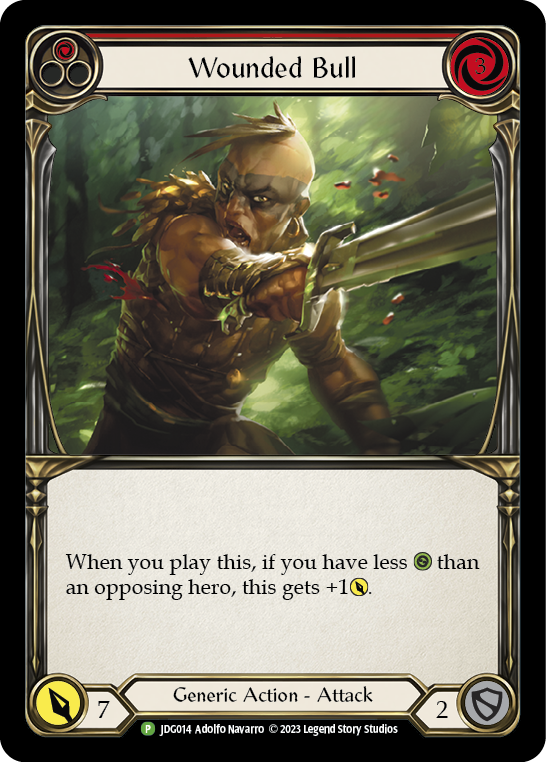
“Bullander” quickly eclipsed the handful of arcane Iyslander strategies, now driven to the fringe, in terms of putting up competitive results. Despite being outshone, champions of these lesser-known or less respected Elemental Wizard archetypes diligently work to answer the simple yet frustratingly robust question: "Why not play 2-card 8s?" When Michael won the first ever World Championship two months later with a surprisingly similar list to his National Championship deck, the world heard loud and clear: Bully was the best way to build Iyslander.
But what if it didn’t have to be?
Bullander never sat well with me. Its Guardian-lite playstyle didn’t feel like Wizard. Skipping over red spells felt like a massive flavor fail. And every time I tried the Bullander list, I was frustrated at the reduced density of cards able to utilize Storm Striders.
None of this is to say that I think the deck is bad - it is extremely powerful, and I would never blame anyone for playing it. But I wanted to see if Iyslander could be built “as James White intended,” filling the red slots in my deck with arcane damage Wizard cards, not generic attacks.
I had been working on Iyslander diligently even before the debut of Bullander, and one thing was immediately evident to me: most players significantly undervalued arcane damage. And from that, I very quickly came to the conclusion that, as an archetype, Arcane Iyslander is just as good as Bullander.
I worked for almost a year on this thesis, iterating and refining lists, and coming to intimately understand the value of arcane damage myself. In the summer of 2023, my efforts finally came to fruition as I won back-to-back Battle Hardened events in Cincinnati and Chicago on the same 80 cards: a modern Arcane Iyslander deck. The list had 6 attack actions (none of which were Wounded Bull) that served niche roles for a handful of specific matchups. Otherwise, it eschewed attack actions in favor of going all-in on arcane damage and heavy disruption.
Today, I would like to make an argument in favor of arcane damage. This article will break down the theory of arcane, and how it compares to physical attacks in the greater framework of Flesh and Blood. It is my intention that this article is not meta-specific, but instead might be perpetually relevant as the Wizard card pool grows and new spellslingers are faced with the question: why not play Wounded Bull?
The Philosophy of Arcane
To begin, we must hear out the argument for why arcane damage is “bad.” In FaB, there is a general trend in card design called the “Rule of 8,” which is well explored by authors such as Roger Bodee, Frank Hung, Drew Cordell, and Michael Hamilton. To summarize: the sum of the pitch, attack, and defense of a card, minus its cost, tends to add up to 8. This sets a “rate” at which you can expect damage, given the cost of a card that you play. The simplest examples of the Rule of 8 can be seen on Wounding Blow, Critical Strike, and Brutal Assault.
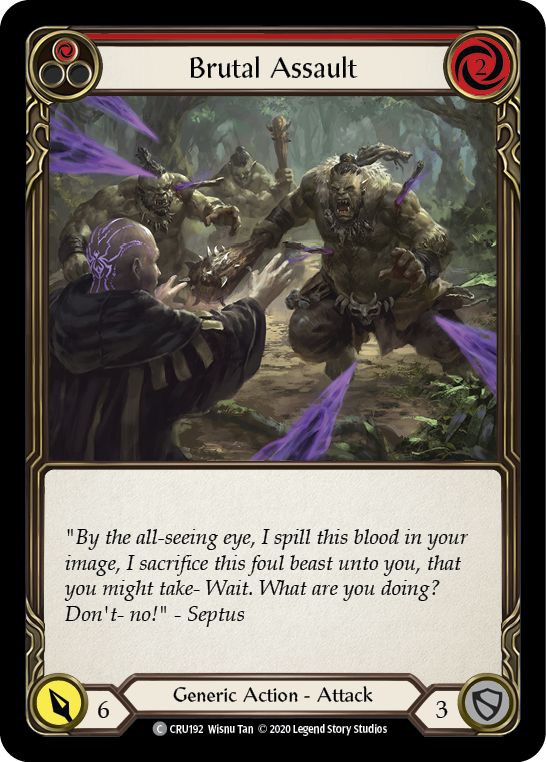
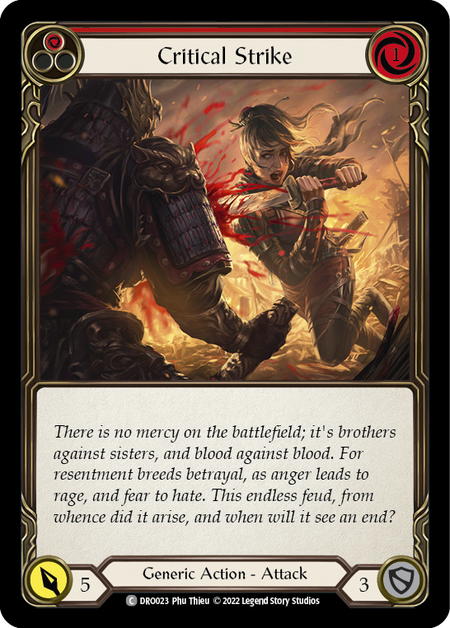
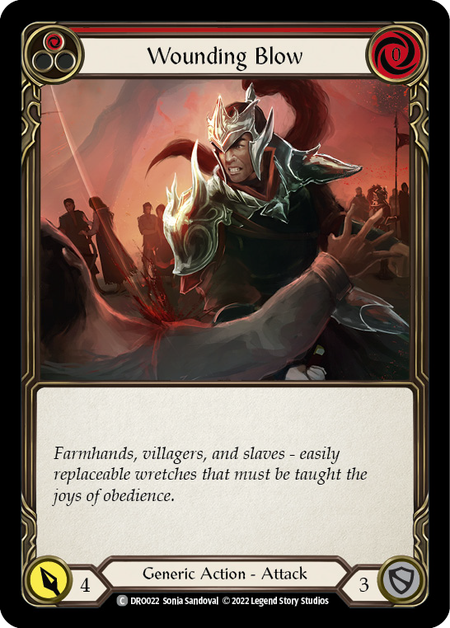
Cards that deal arcane damage historically fall short of this bar. If you consider the damage they deal as their attack value, then vanilla staples like Zap, Scalding Rain, and Voltic Bolt add up to 7, and are thus “under-rate;” for the resources and cards you invest in them, you don’t get as much damage as you could with other cards.
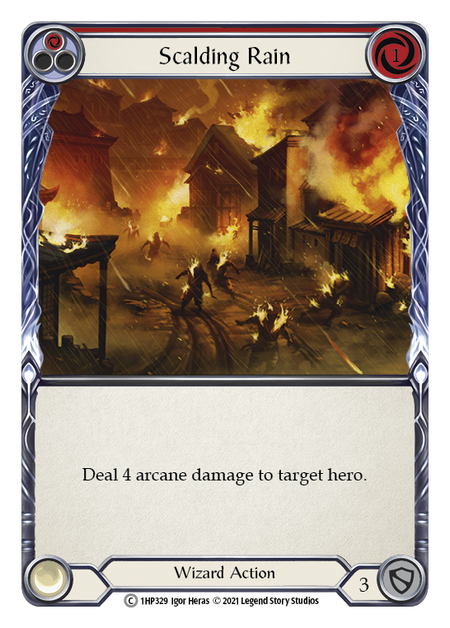
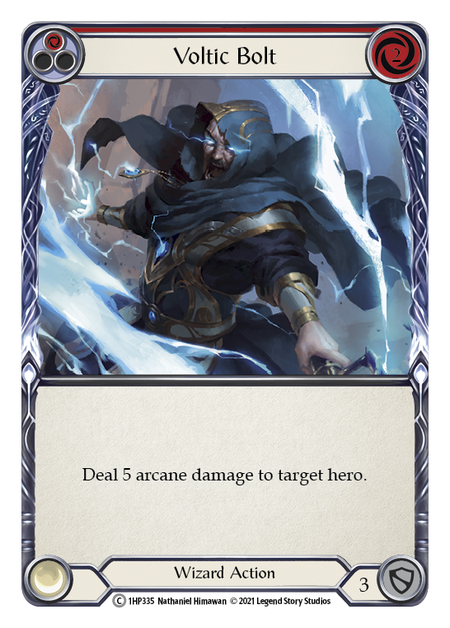
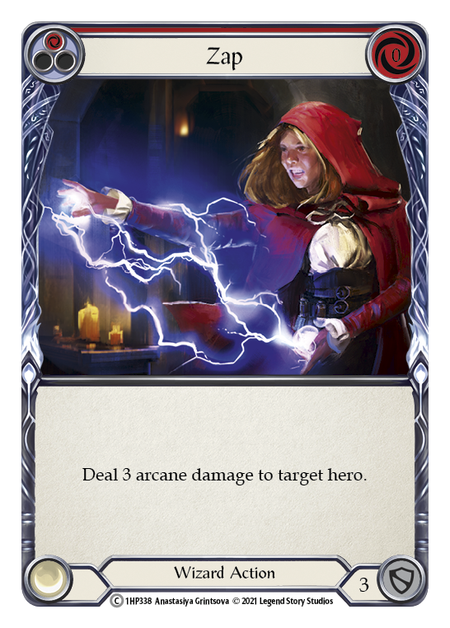
This simple number comparison establishes the oversimplified argument that arcane cards aren’t worth playing over regular attacks.
So... that’s it. Cut and dry. Attacks are better than arcane spells. Thanks for reading!

Rhea Adams (@onhiteffect on Twitter and YouTube) is a pro player on Team Ascent, a part-time content creator, and a full-time lover of all things Flesh and Blood...
Just kidding, of course it's not that cut and dry.
It’s undeniable that arcane cards are almost always under-rate compared to their attack action counterparts, even in pushed Majestics like Encase or Mind Warp. However, this isn’t to say they’re bad cards… this rate penalty is a design choice by LSS to stop arcane cards from being too good. There are several benefits to playing cards that deal arcane which make up for their under rate nature: evasion, demanding pitch, denying equipment, and the Storm Striders dilemma. Let’s break each of them down one at a time.
The Utility of Evasion
The simplest answer for why arcane damage is under-rate is because it’s evasive. The value of evasion is inherently tricky to evaluate. When your opponent isn’t interested in blocking, it’s literally useless, and it’s moments like those where the under-rate nature of arcane cards is most glaring. But conversely, when your opponent wants to block, arcane damage is significantly harder to prevent than physical attacks - more on that later.
“Evasion” is a TCG slang term, like rate; and its meaning is quite different from the word's common usage outside TCGs. It generally refers to some property of a card that makes it difficult to block or prevent, and so it “evades” the resistance of the opponent.
Arcane damage is a common form of evasion in Flesh and Blood, as it can’t be normally defended from hand by blocking. Other examples of evasion in FaB are things like intimidate, attack reactions, or dominate. A card like Oasis Respite could also be considered evasive, because it defensively gets around dominate and other restrictions on blocking.
Evasion isn’t unique to wizards, but arcane damage is the undeniably “wizard” flavor of evasion within the context of Flesh and Blood class philosophy.
What we notice about evasion as we look across the game is that it is almost always over-costed: Bravo, Showstopper’s ability to staple dominate onto an attack also comes at the cost of two resources; Rhinar, Reckless Rampage need to discard cards to Intimidate his opponent’s defense away; and Wizards play under-rate spells because they demand pitch rather than blocking.
In this framework, the under-rate numbers on arcane cards is a bit more forgivable; it's the cost one pays in order to have the evasion of an unconventional blocking mechanism. It's the cost one pays in order to close games.
Equipment Denial
In most games of Flesh and Blood, the opponent dons a suite of equipment that complements their gameplan: Snapdragon Scalers to create an extra action point on a critical turn, or Crown of Providence to filter a card from arsenal into hand. Coincidentally, most heroes are afforded a “fridge” of equipment with defense values that lets them block their opponents’ attacks without defending with cards from hand. However, blocking and defending vs arcane sources simply doesn’t work. Most default equipment suites render a wizard’s spells undefendable, unblockable, and utterly deadly.
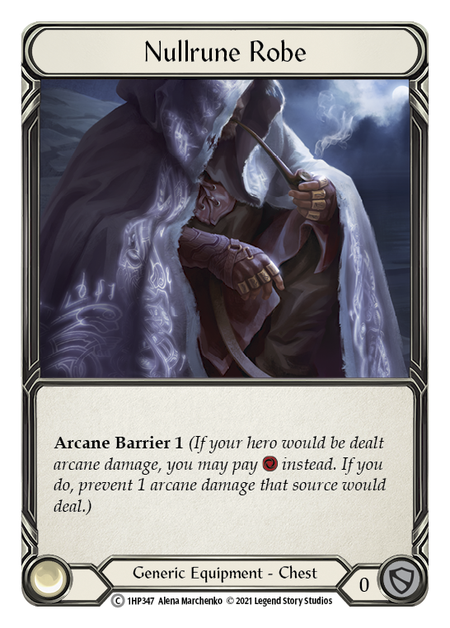
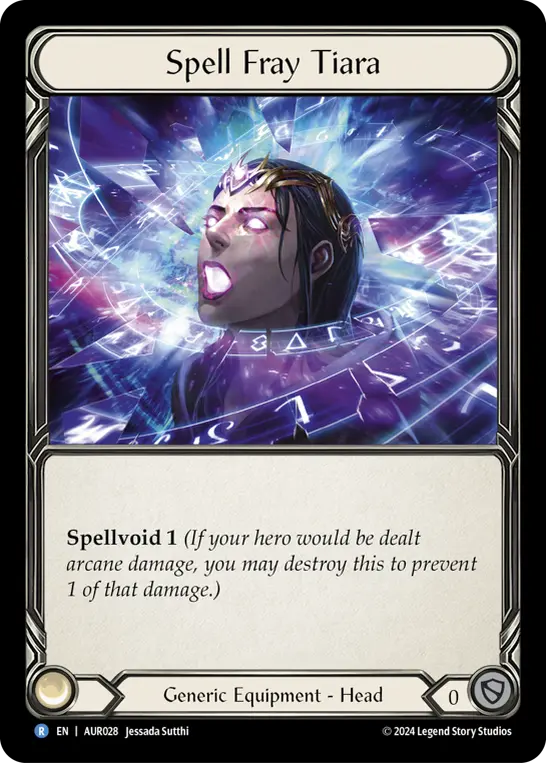
The answer to having any chance vs arcane damage lies in Arcane Barrier (and its rarer cousin, Spellvoid). As of the writing of this article, Arcane Barrier appears exclusively on equipment, save two items (which see essentially no play). If your opponents want to be prepared for arcane damage, they must make sacrifices by not playing their best equipment, and in doing so typically power down their deck.
If a Warrior wants to keep both Refraction Bolters and Fyendal’s Spring Tunic in versus a wizard, they at most can present two pieces of Nullrune – and that requires both their head and arm slots, which means foregoing powerful legendaries with repeatable effects like Ironsong Versus. Even when the opponent is sacrificing armor that would strictly block, the damage deficit favors arcane damage.

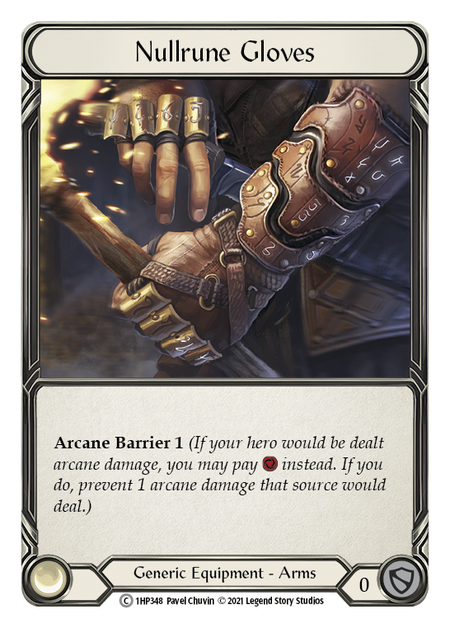
Consider Crater Fist in Guardian being replaced by Nullrune Gloves. In a typical game, the Guardian would gain a functional 3 life from blocking with Crater Fist’s temper 2. Swapping it with Nullrune simply enables blocking arcane; there’s no “first one’s free” like with traditional equipment having an innate block value.
The Opportunity Cost of Blocking vs. Pitching
Equipment taxes don’t just stop at denying equipment in slots. In physical matchups, heroes are afforded the choice of defending with equipment or cards from hand. Versus arcane, heroes are mandated to defend with equipment and cards from hand. To use arcane barrier, you have to pitch resources, which can be extremely taxing on decks. Flesh and Blood is ultimately a numbers game, and part of optimizing your numbers relative to your opponents is making sure you can squeeze as much damage out of your cards as possible. Because of that pesky Rule of 8 caring about pitch value, blue resource cards aren’t very useful offensively.
As a rule, decks are usually designed to only have as many resources as they need in a typical turn. Very few heroes can afford to load their list full of excess blues; they simply sacrifice too many games in the process because they can’t keep up with their opponent’s damage.
Arcane damage preys on this optimization. Your opponent’s red Brutal Assault defends for 3 versus a Wounding Blow, but only for 1 versus a Zap. While arcane spells are under-rate, your opponents’ defenses versus them are also under-rate.
If we reference the US National Championship 2023 top 8 lists, we can see this principle in action. The average defense value across the cards in all 8 decks is 2.5, whereas the average pitch value across the cards in all 8 decks is 1.8. The numbers confirm the theory: blocking arcane damage is hard.
I mentioned Spellvoid, the cousin of Arcane Barrier, earlier. Spellvoid by itself can destroy equipment to prevent arcane without any pitching - but once it’s gone, your opponent is left without any residual arcane barrier and is back to being defenseless versus arcane damage. While spellvoid is correct in some matchups, particularly very aggressive damage races where the opponent really can’t spare any resources in the race to win, it’s very uncommon to see it chosen over arcane barrier due to its lack of repeatable utility.
The Storm Striders Dilemma
The last point I would like to make is the tipping point that personally convinced me to build Iyslander without attack actions: fully utilizing the power of Storm Striders on demand.
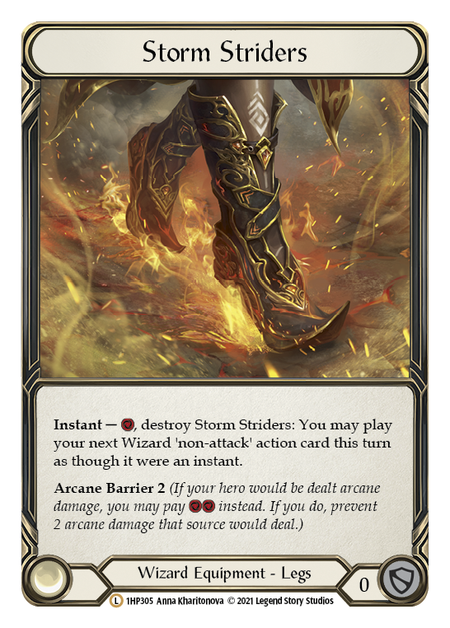
Anyone familiar with Wizard should know what Striders do. Essentially an extra action point on demand, striding an arcane damage card during an opponent’s turn has become the signature way to close games as Kano and Iyslander. But using Storm Striders to their full potential requires that you actually have a card in hand that deals arcane damage. I’ve played one too many games where my opponent was at a low life total and I was primed for the kill turn… only to draw a hand with two red 2-block attack actions and die to my opponent’s attacks.
Because of limited deck slots, efficient attack actions typically replace red spells in Wizard deck lists, which means you don’t have as many arcane damage cards to stride in. If we look at Lucas Oswald’s US Nationals 2023 Top 4 Bullander list, we see 23 cards that deal arcane – on a given turn, there’s a 79% chance to draw at least 1 (this is including relative duds like blue Frosting, which deal a measly 1 arcane). In comparison, my Battle Hardened lists have 34, and a whopping 92% chance to draw one or more. Most of this difference is comprised of “tall” reds, cards like Aether Hail and Icebind that deal 3+ damage. These cards not only increase the density of Strider targets, but they also significantly increase the average kill range (in the sampled bully list, the average arcane damage card deals 2.5. The average spell in my list deals 2.8).
Conclusion
At its core, Flesh and Blood is about attacking and blocking. Some decks plan to attack more, and some decks plan to block more, but they almost all plan to do some of both in every game. Arcane damage is a wrench in your opponent’s plan of optimizing the blocking defense of their cards.
Playing arcane puts multiple burdens on your opponent. Did they bring arcane barrier? Do they have spare pitch? If they pitch on your turn, will they still have spare pitch on their turn? Do they have spare pitch right now, in the middle of their turn?
The points I’ve made so far crystalize into a summary like this, where each point builds upon the others:
Arcane damage can’t be defended normally.
A deck must give up equipment slots to defend against arcane damage.
Defending against arcane damage is difficult for decks with optimized pitch curves because spare pitch is rarer than spare block.
Playing more arcane damage cards makes your kill turn more deadly.
All of this is to say: playing arcane cards makes Wizard more consistent. Wounded Bull certainly is an efficient attack – but on a fundamental level, your opponent’s deck was likely designed to defend well anyways. That red Aether Hail on the other hand? Sometimes it might as well be unblockable.




